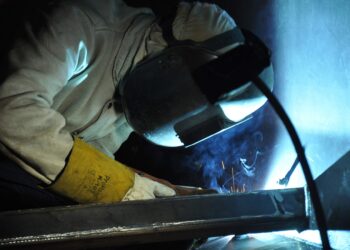Slovakia appears to be on the verge of ending production of its wheeled self-propelled artillery systems, marking the end of an important chapter in the country’s defence industry. For decades, Slovakia’s Konštrukta–Defence has been known for its line of domestically developed 155 mm wheeled howitzers, most notably the Zuzana and its modernized successor, the Zuzana 2. These systems were considered a source of national pride and a symbol of Slovakia’s ability to produce NATO-standard heavy weaponry. However, according to recent reports from Slovak and international defence outlets, production of the Zuzana 2 is being phased out, and the company is expected to shift focus toward a newer, lighter and more mobile artillery system – the Eva M 2.
The decision to discontinue the Zuzana 2 appears to stem from a combination of economic, tactical and strategic factors. Lessons drawn from the ongoing war in Ukraine have profoundly influenced military thinking across Europe, and particularly within Central European states. The conflict has demonstrated that large, heavy and complex artillery systems are increasingly vulnerable in modern, high-intensity combat environments where drones, counter-battery radars and precision-guided munitions dominate the battlefield. Mobility, rapid redeployment and crew protection have become paramount. As a result, demand is shifting toward lighter, faster and more automated systems that can quickly fire and relocate before being detected.
The Zuzana 2, while technologically advanced, was built on an older concept of a large, heavily armed howitzer mounted on an 8×8 chassis. Its weight, production complexity and cost limited both domestic procurement and export potential. Although Slovakia successfully exported some units – most notably to Ukraine under a joint European initiative – production rates remained low, and sustaining the program proved financially difficult. In contrast, the Eva M 2, developed as a lighter 6×6 or 8×8 alternative, offers improved mobility, simplified operation and easier production. This makes it more suitable for both Slovakia’s own army and potential export customers seeking adaptable systems at lower cost.
For Slovakia’s defence industry, this marks a turning point. The end of Zuzana 2 production could temporarily disrupt jobs and supply chains tied to the system, but it also opens a path toward modernization. Konštrukta–Defence is expected to redirect resources toward the Eva M 2 and possibly other new-generation platforms, aligning with broader European trends emphasizing modularity, automation and interoperability. From a strategic perspective, this shift indicates that Slovakia wants to remain competitive in the evolving European defence market, where speed of adaptation is often as important as technological sophistication.
The change also carries political and symbolic weight. Slovakia’s wheeled artillery line has been one of its key defence exports and a tangible expression of industrial sovereignty within NATO. Phasing it out in favor of a new generation of systems underscores how battlefield realities – particularly those revealed in Ukraine – are reshaping military doctrines even among smaller nations. While some contracts for Zuzana 2 units are still being completed, its production era is effectively coming to a close. The future of Slovak artillery will likely rest on the success of the Eva M 2 and similar designs that embody the new priorities of mobility, automation and survivability.
In short, Slovakia’s decision to end production of its traditional wheeled howitzer line is not simply an industrial adjustment but a reflection of a broader transformation in modern warfare. The Zuzana 2, once a symbol of national technological capability, is giving way to a new generation of lighter, smarter and more agile systems—better suited to the challenges of the twenty-first century battlefield.






